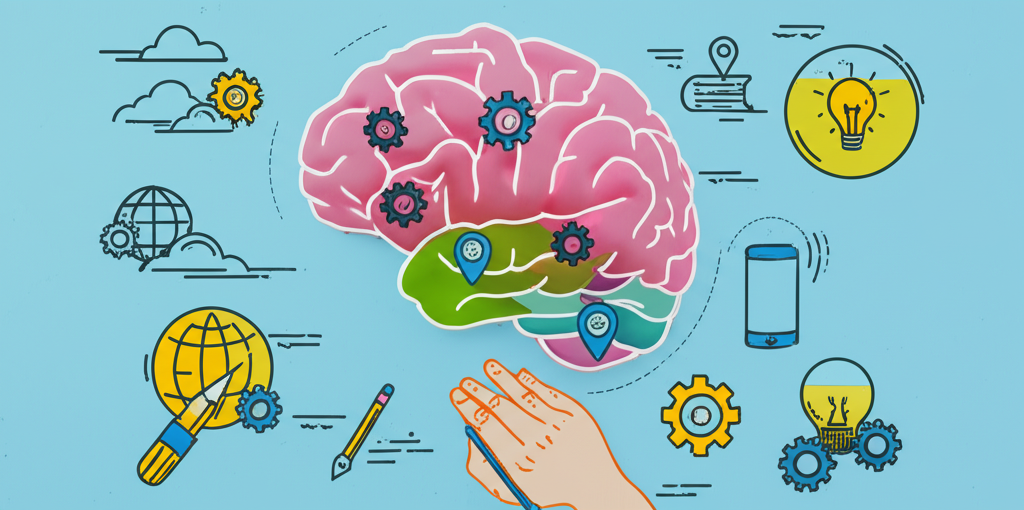 illustration from Gemini
illustration from Gemini
Why Rote Learning Isn't Enough Anymore
In a world overflowing with information and driven by constant change, simply knowing facts isn't enough. Students need the ability to think critically – to analyze information, evaluate arguments, solve complex problems, and make sound decisions. Moving beyond traditional textbook learning to actively cultivate critical thinking skills is essential for preparing students not just for exams, but for life.
The Core Benefits of Critical Thinking Education
Critical thinking transforms students from passive listeners into active, engaged learners. It fosters intellectual curiosity and independence. Key benefits include:
- Enhanced Problem-Solving: Students learn to break down complex issues, identify underlying causes, and develop innovative solutions.
- Informed Decision-Making: They gain the ability to weigh evidence, consider different perspectives, and make logical choices.
- Clearer Communication: Critical thinking underpins the ability to articulate ideas logically and persuasively, both in writing and speech.
- Greater Adaptability: It equips students with the mental flexibility needed to learn new things and adapt to evolving situations throughout their lives.
- Responsible Citizenship: A democratic society thrives when its citizens can critically evaluate information, media, and civic discourse.
Actionable Strategies for Your Classroom
How can educators effectively weave critical thinking into daily lessons? Here are practical approaches:
1. Master the Art of Inquiry
Shift questioning from recall to reasoning:
- Socratic Questioning: Use probing questions (e.g., "What evidence supports that idea?", "What are the assumptions here?") to guide students deeper into their own thinking.
- Open-Ended Prompts: Ask questions with multiple possible answers ("What might be the consequences of...?", "How else could we approach this?") to encourage diverse perspectives.
- Focus on "Why" and "How": Prompt students to justify their reasoning and explain processes, not just state facts.
2. Foster Active Investigation
Engage students through problem-centered approaches:
- Problem-Based Learning (PBL): Present students with real-world problems or scenarios they must investigate and solve, applying course concepts along the way.
- Inquiry-Based Learning: Encourage students to formulate their own questions, conduct research, analyze findings, and present conclusions, with the teacher acting as a facilitator.
3. Leverage Collaboration and Technology
Use group work and digital tools strategically:
- Structured Group Activities: Implement debates, collaborative projects, or peer-teaching sessions where students must discuss, defend ideas, and learn from each other.
- Digital Literacy & Tools: Teach students to critically evaluate online sources. Use simulations, online discussion forums, and collaborative platforms to enhance learning and thinking.
4. Teach Logical Reasoning Explicitly
Make the components of good thinking visible:
- Argument Analysis: Help students identify claims, evidence, and assumptions in texts or discussions.
- Fallacy Recognition: Teach common errors in reasoning (e.g., ad hominem, straw man) so students can spot them.
- Evidence Evaluation: Guide students in assessing the credibility, relevance, and sufficiency of evidence.
5. Cultivate Metacognition Through Reflection
Encourage students to think about their own thinking:
- Learning Journals: Have students write about their thought processes, challenges, and insights during learning activities.
- Self-Assessment & Peer Feedback: Create opportunities for students to reflect on their understanding and provide constructive feedback to peers.
Navigating Challenges and Measuring Growth
Implementing these strategies takes effort. Common hurdles include curriculum pressures, standardized test focus, and the need for specific teacher training. Overcoming these requires administrative support, professional development, and a school-wide commitment.
Assessing critical thinking also requires moving beyond multiple-choice tests. Consider using:
- Analytical Essays
- Problem-Solving Projects
- Debates and Presentations
- Student Portfolios
- Performance-Based Tasks
Critical Thinking Across Subjects
These skills aren't confined to one subject area:
- Science: Designing experiments, interpreting data, questioning results.
- Math: Justifying problem-solving strategies, analyzing patterns, applying logic.
- History: Evaluating source reliability, analyzing perspectives, constructing historical arguments.
- Literature: Interpreting themes, analyzing character motivations, evaluating literary critiques.
- Social Studies: Analyzing social issues, evaluating policy proposals, considering ethical implications.
The Home-School Partnership
Parents are crucial allies. Encourage families to:
- Foster curiosity by welcoming questions.
- Discuss current events and complex topics at home.
- Encourage independent problem-solving.
- Balance screen time with activities that stimulate thought (reading, puzzles, creative play).
Conclusion: Building Tomorrow's Thinkers
Fostering critical thinking is more than an educational strategy; it's an investment in our students' futures. By equipping them with these essential skills, we empower them to navigate complexity, contribute meaningfully, and thrive in the 21st century. It requires a conscious shift in teaching practice, but the reward – developing capable, thoughtful, and adaptable individuals – is immeasurable.
Published on April 10, 2025
reference: Various Article on internet
Gema
Wordsmith and content writer passionate about creating high-quality content that informs, entertains, and inspires. Let me bring your brand's story to life.
All stories by : Gema

0 Comments